The Lytton Reaction Ferry – powered by the Fraser River
My exploring at Lytton on Day 7 of the trip – Wednesday, May 3 – got sidetracked a bit when I looked up the Fraser River and saw a tiny ferry. A memory from decades ago told me that it was one of the last reaction ferries remaining in BC – ferries that are operated by the current of the river, with no motors. That I had to see again.
This was the view looking up the Fraser River from downtown Lytton when I saw the ferry in the distance.
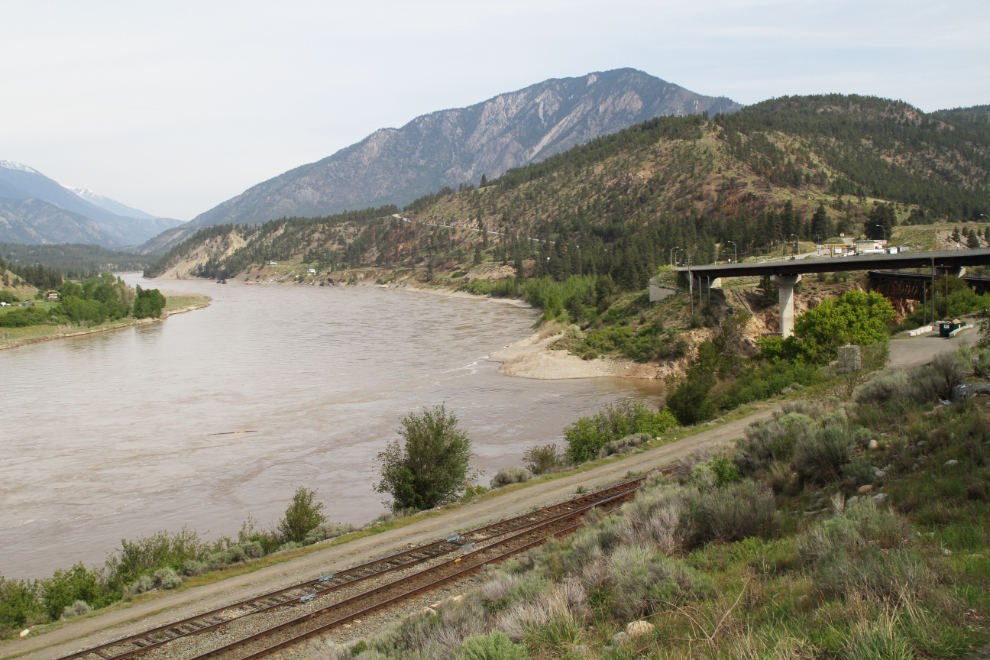
I got to the ferry landing at 09:30, intending to just take a few photos and carry on exploring. The burned area to the left offering a great vantage point to watch from initially.
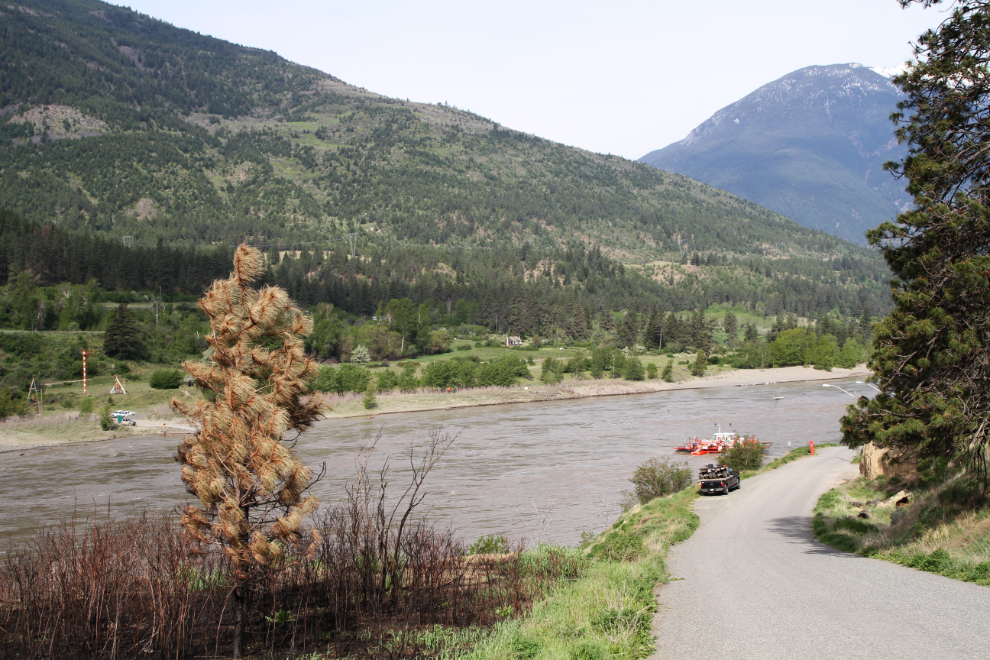
These ferries work on demand – whenever a vehicle shows up, they’ll take them across the river. The current in the middle of the Fraser River was very strong, and appeared to be sending water across parts of the deck occasionally.
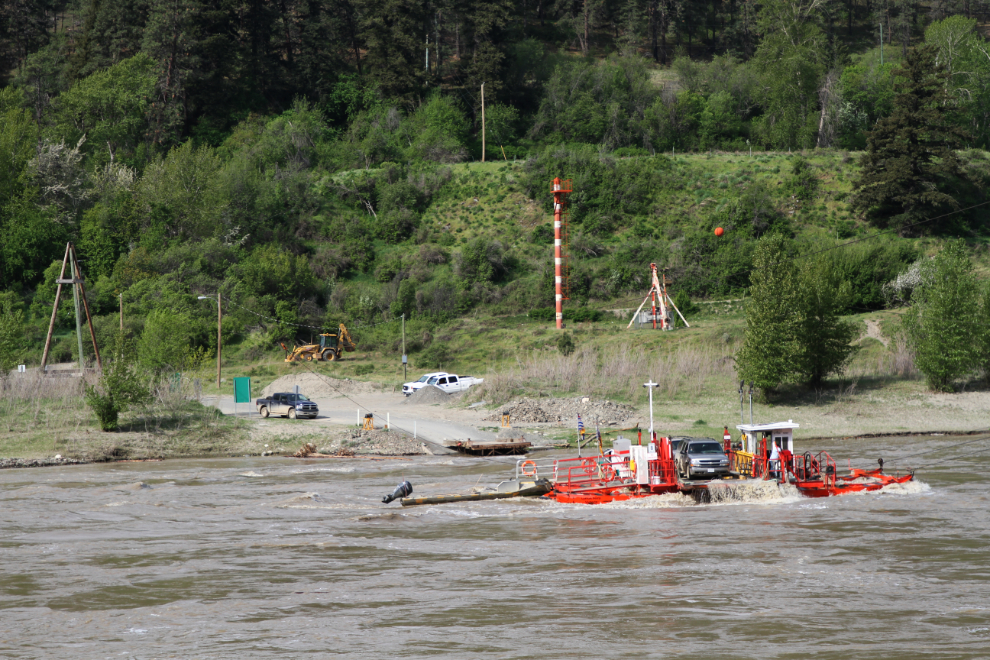
There are 5 reaction ferries remaining in the inland ferries fleet operated by MOTI (the Ministry of Transportation and Infrastructure), at:
- Big Bar, across the Fraser River west of Clinton
- Little Fort, across the North Thompson River on Highway 5
- Lytton, across the Fraser River north of Lytton
- McLure, across the North Thompson River north of Kamloops off Highway 5
- Usk, across the Skeena River northeast of Terrace
This ferry operates from 06:30 am until 10:15 pm 7 days a week, 365 days a year. The river never freezes over here. The ferry capacity is 9 tonnes GVW and 18 passengers, including drivers. The vehicle or combination length cannot exceed 12 meters.
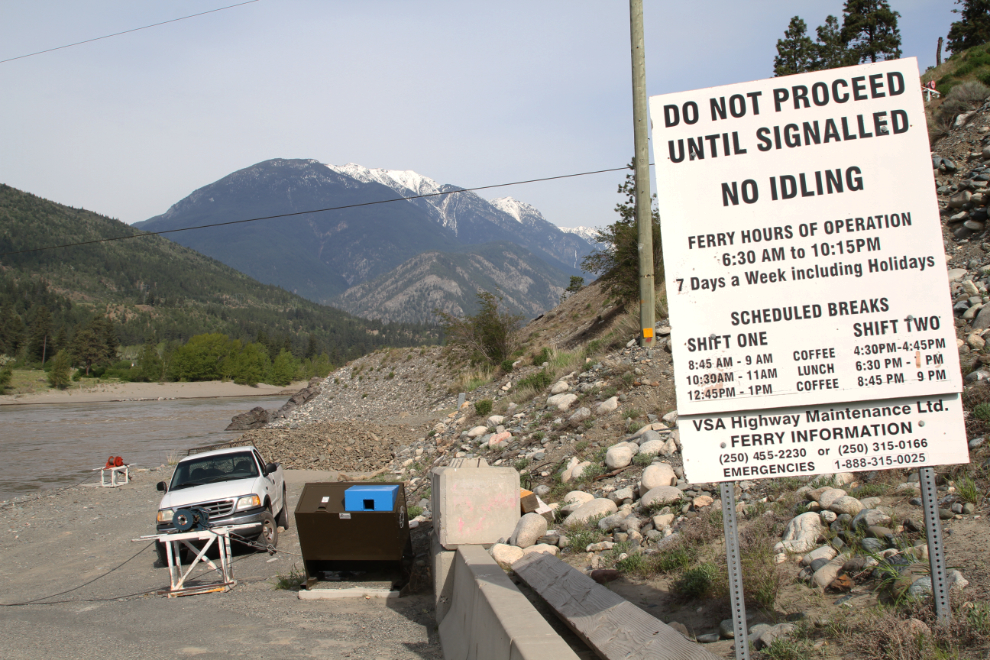
These boats fascinate me – so simple and so effective in a location like this. With no motors, pretty much anything that can break can be fixed in a few minutes.
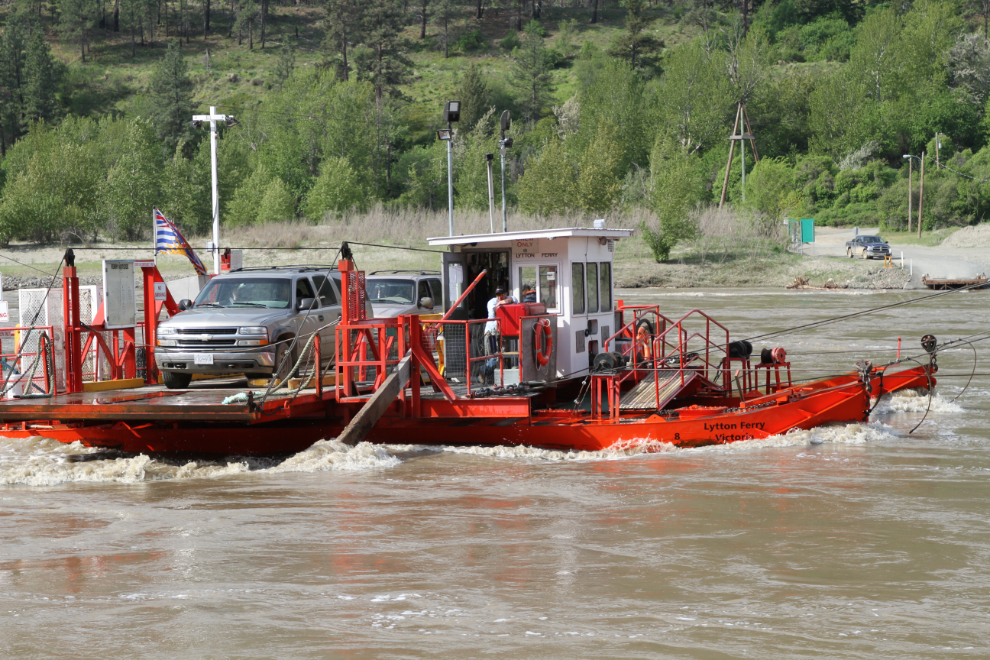
Watching the ferry dock was a surprise. It gets put into proper position with prybars and ropes – there are no power assists here either.
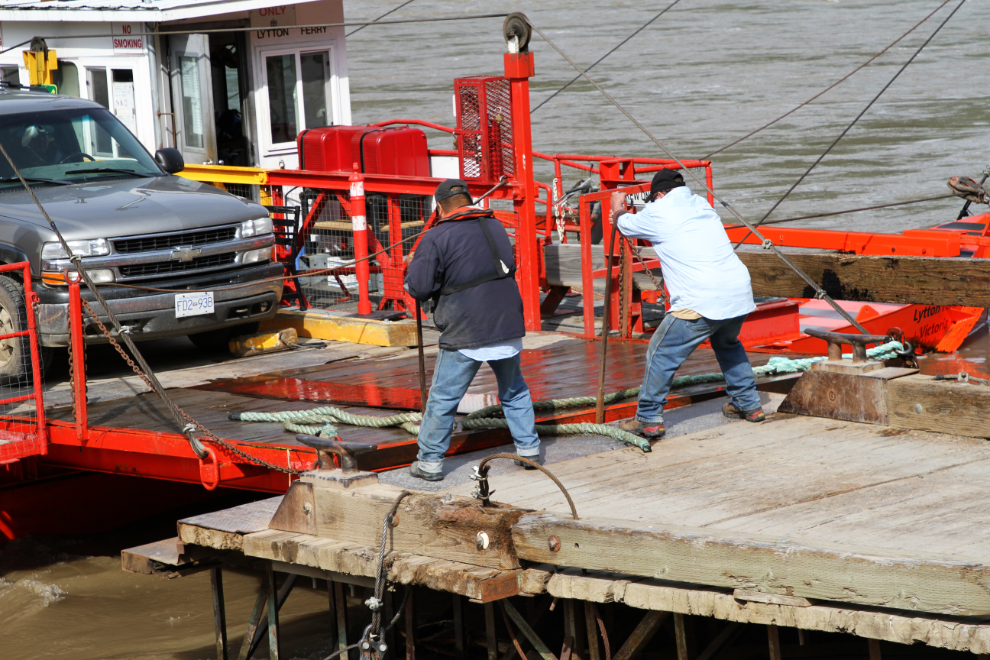
The position of the dock needs to be changed regularly as the water goes up and down, and that, too, is done manually, with hand-cranked winches, not a Cat.
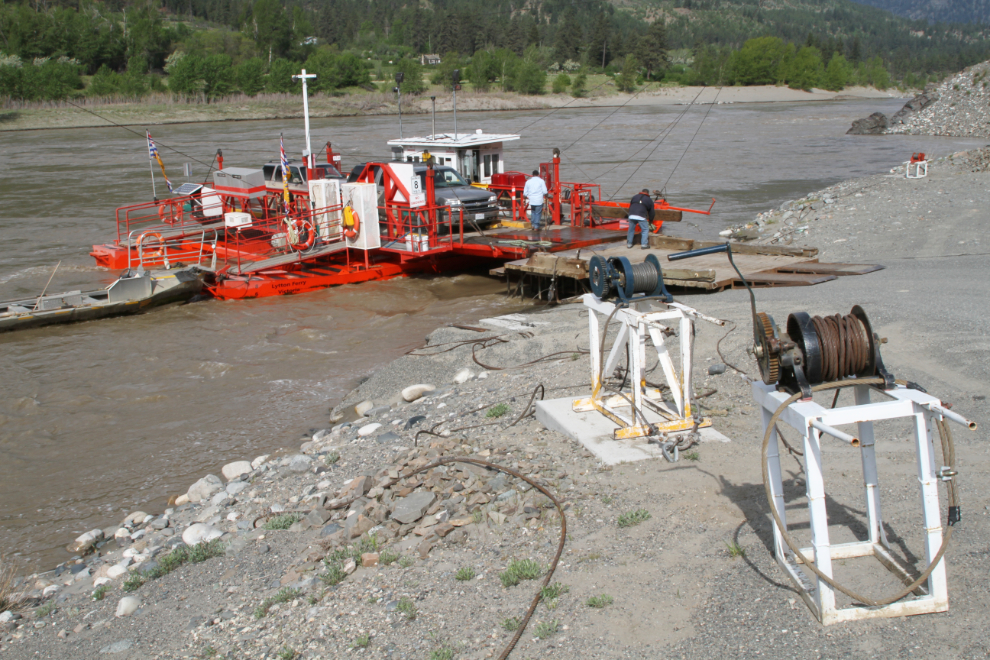
At this point the captain yelled to me and asked if I wanted to go for a ride – “we’ll be coming right back.” Hell yeah!
The captain drops a large beam (4×12?) into the river current to swing the ferry to the right angle so the current powers it across the river. I asked if they ever get snapped off by driftwood and he said that it happens occasionally if they’re not paying attention, but a spare beam is stashed on shore.
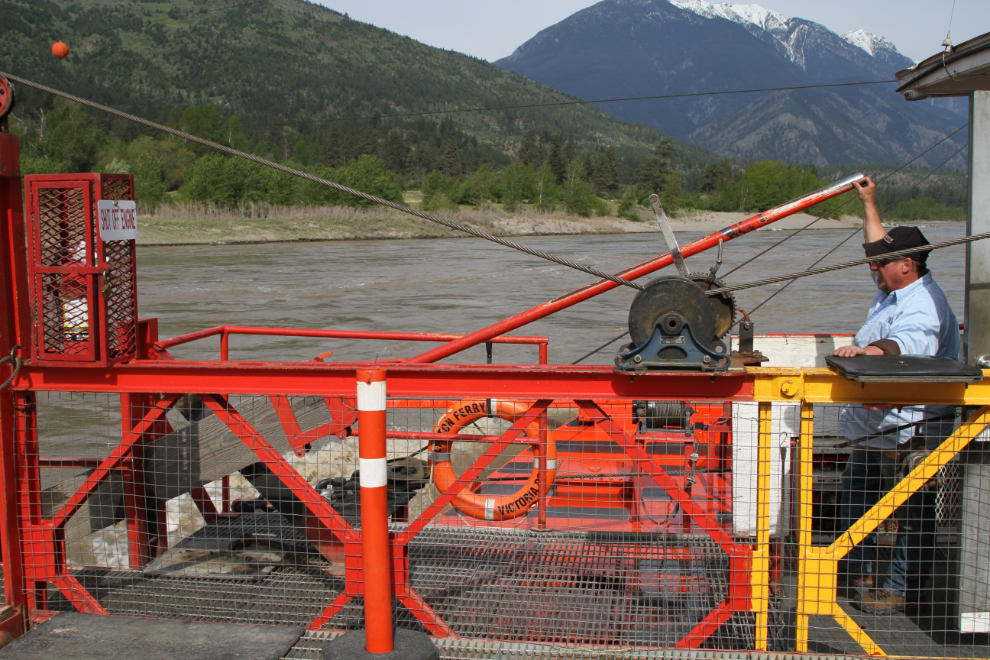
Although I asked a few questions, looking back now, I didn’t ask enough. What does that wheel control? It took both the captain and deckhand to turn it at one point. It think it controls a pair of rudders, but it may also be to control the cables to the overhead line that the ferry is attached to.
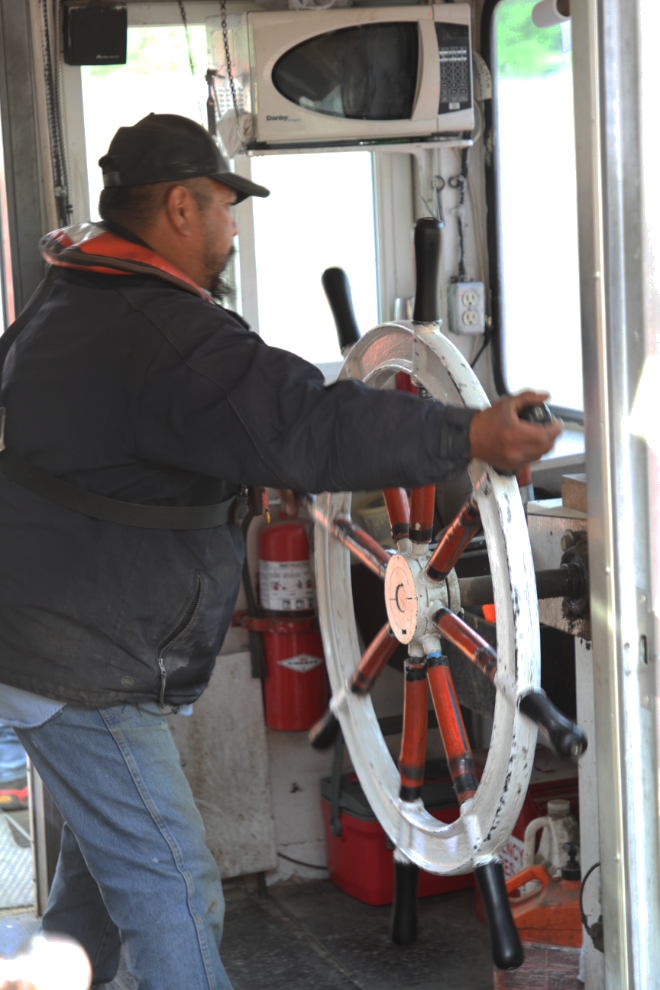
Once the ferry was progressing nicely, the captain brought out a photo of the last horse-drawn wagon team to be carried on the ferry. He didn’t know what date that might have been.
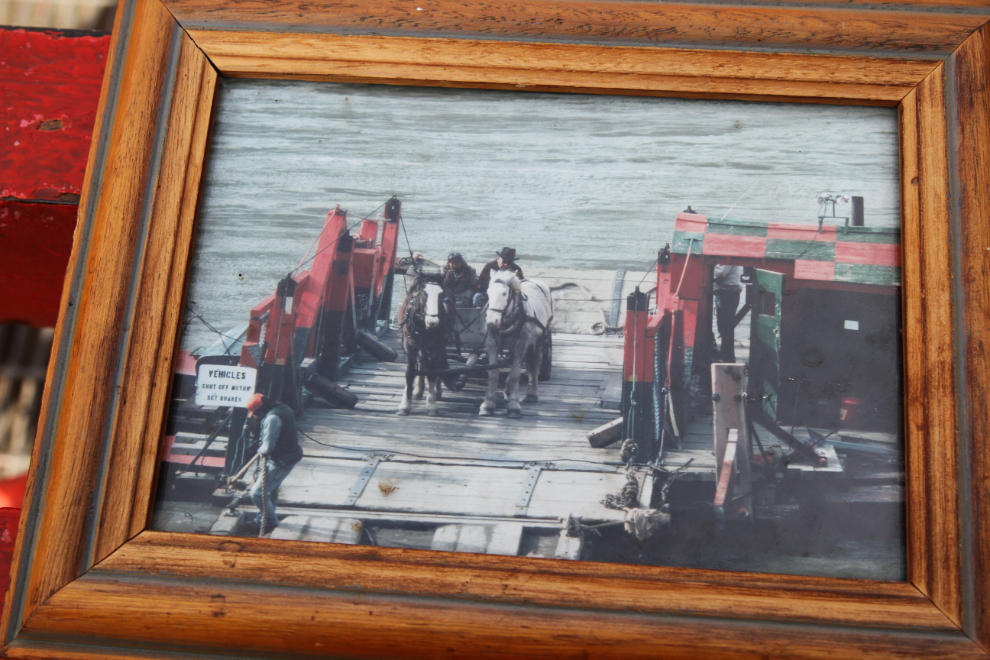
The Fraser River hard at work propelling us across. The ferry gets used primarily by people living on the west side of the Fraser, but gets some recreational use as well – there are endless networks of logging roads on that side (well, on both sides, actually).
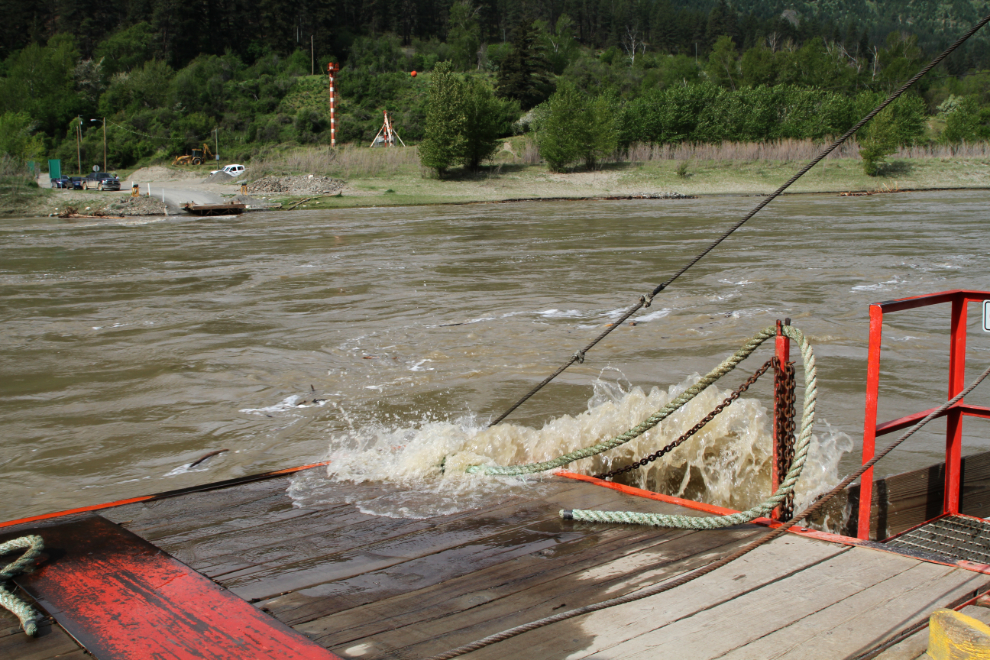
The ferry is a catamaran hull, with the pair of narrow hulls perfect for minimizing problems with driftwood and floating ice.
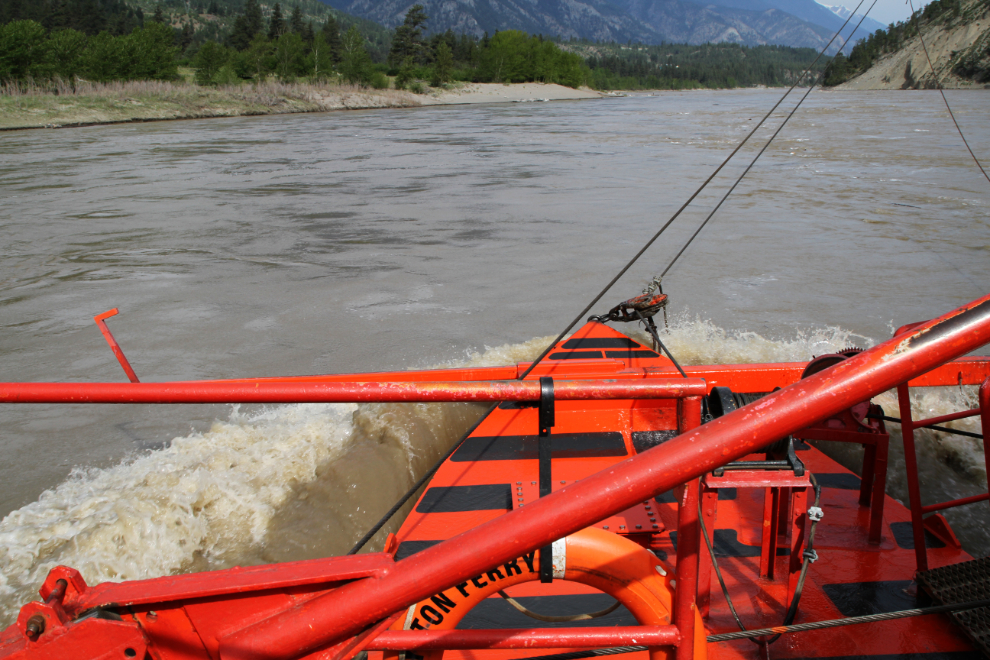
While the river propels the ferry, these cables stabilize it and help get it to the right angle for the current to work
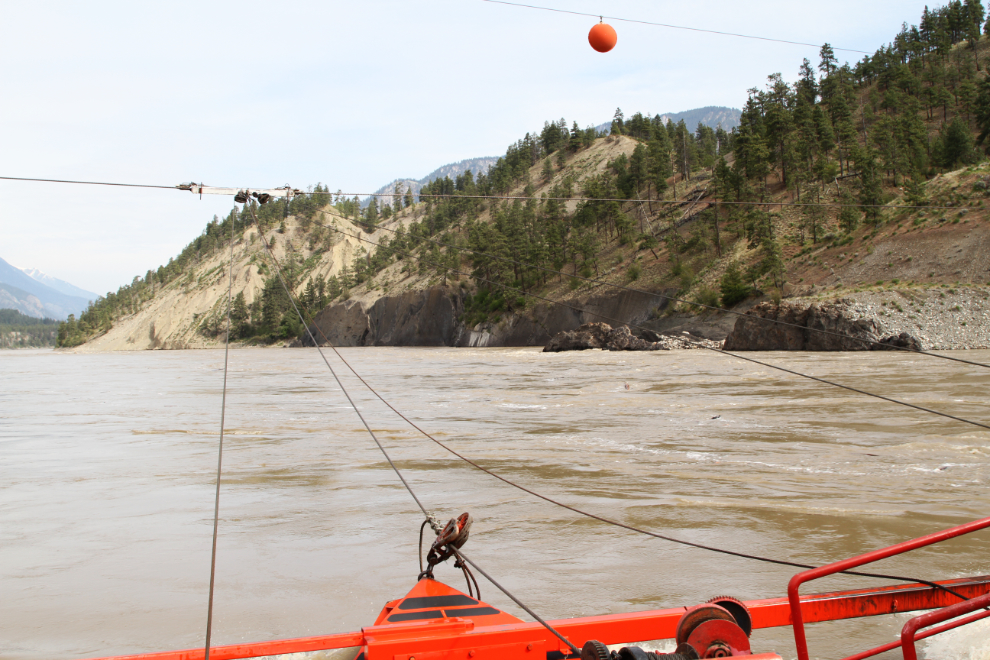
Back on the east side again. The ferry seems to dock better on the west side for some reason – there’s a lot of brute force required on this side.
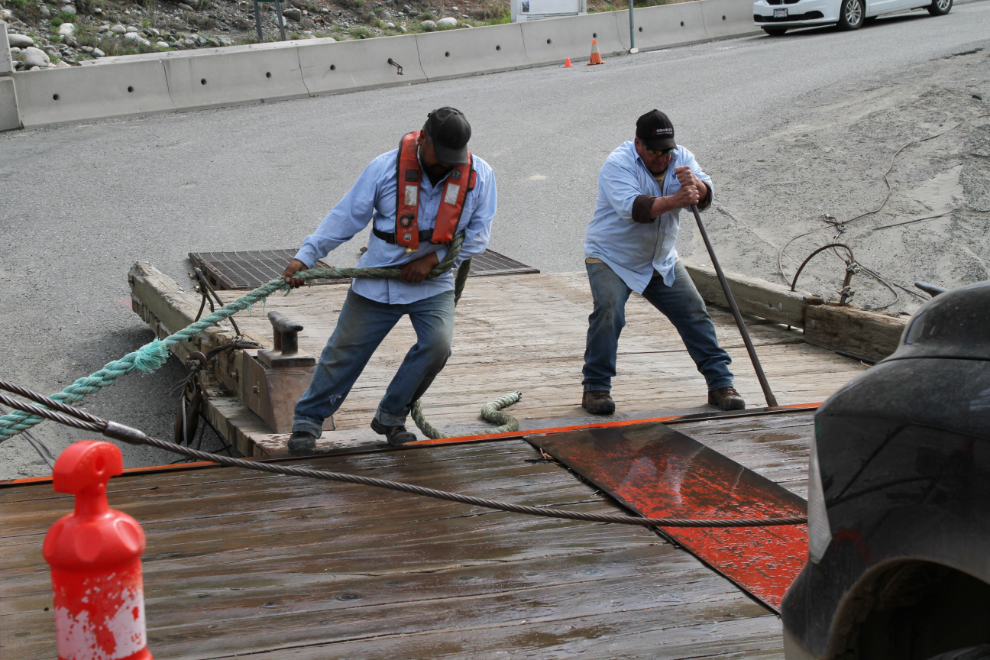
Ten minutes in total – my experience with real living history. What a treat also to be able to talk to a couple of people who are proud of the work they do. The further off the beaten track you go, the better life is. In places like this, there’s no pretense – it’s real people taking pride in doing real work. If you get the chance to ride on one of these reaction ferries, take it.
Back to exploring the Lytton area 🙂